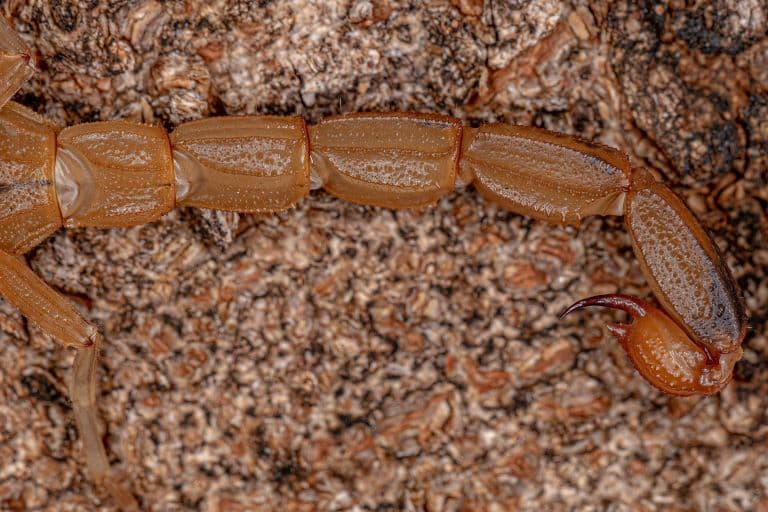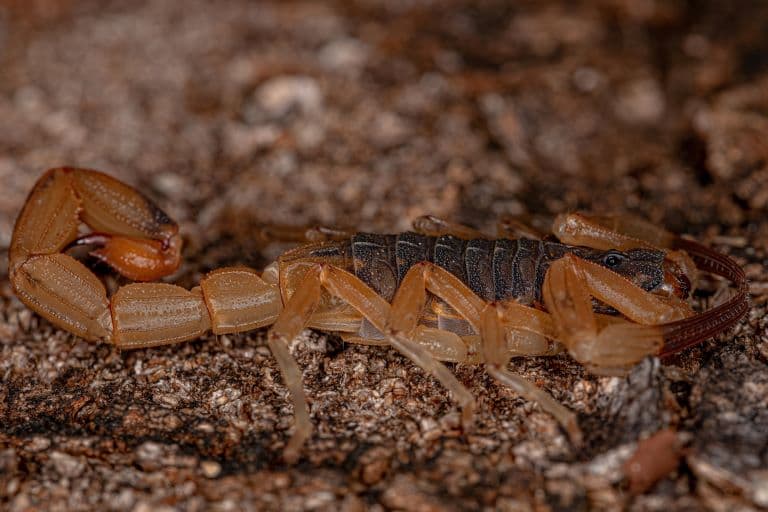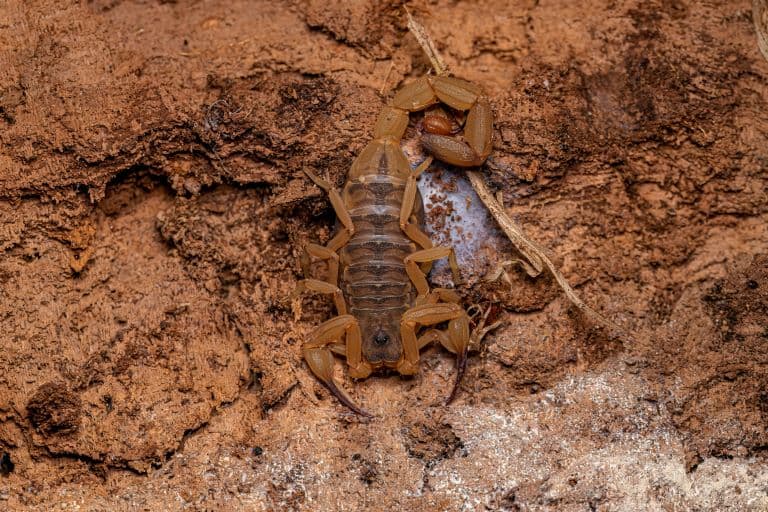Brazilian Yellow Scorpion Profile
The Brazilian yellow scorpion, or tityus serrulatus, is a scorpion species of the Buthidae family. As its name suggests, it is native to Brazil, and is endemic throughout the country. It is an invasive and dangerous species, with population levels that are difficult to control.
The Brazilian yellow scorpion is an arachnid, and just like its cousins – spiders, ticks and mites – it has 8 legs, along with its two infamous claw-like pedipalps. It has a flat, wide body, and a segmented, barbed tail. Scorpions use their pedipalps to grasp hold of their prey and then swing their barbed telson (poisonous tail tip) overhead to immobilise the creature before devouring it.
These arachnids are highly adaptable, having moved from their traditional savannah homes to a vast population in urban areas such as sewers and dumps.

Brazilian Yellow Scorpion Facts Overview
| Habitat: | Traditionally savannas/grasslands, more recently urban areas Hot, humid conditions |
| Location: | Brazil |
| Lifespan: | 3-8 years |
| Size: | Around 5-7cm body length |
| Weight: | 1-5g |
| Color: | Pale yellow, dark yellow, brown/tan |
| Diet: | Insects |
| Predators: | Owls, frogs, lizards, skunks |
| No. of Species: | 1 |
| Conservation Status: | Least concern |
There are around 1500 species of scorpion worldwide, but only around 30 of these (all from the Buthidae family) are dangerous to humans. The tityus serrulatus is responsible for about 90000 stings per year. Stings can cause seizures, vomiting and incredible pain, even death. 1
Brazilian yellow scorpions are generally parthenogenetic – meaning that they are able to asexually reproduce without the need for fertilization.
Females are able to produce several times a year, up to 30 offspring each time. Studies show that it is likely females will only produce female offspring through parthenogenesis, needing fertilization to produce male offspring.
Females will carry the young on their back until they are old enough to fend for themselves. 2
Interesting Brazilian Yellow Scorpion Facts
1. The Brazilian yellow scorpion is the most dangerous scorpion in South America
The venom of these small beasts is incredibly toxic, meaning that the tityus serrulatus is responsible for the most fatalities from scorpion stings. This species of scorpion has a mortality rate of around 1% in vulnerable populations such as children and the elderly. 3

2. The Brazilian yellow scorpion can survive for months without eating
Studies have shown that they are extremely tolerant to food deprivation because they have a very low metabolic rate. They have been known to last as many as 400 days without food.
They are also strongly tolerant to water deprivation, although a lack of water impacts their reproduction (whereas lack of food did not).
3. Populations of the Brazilian yellow scorpion are rising
They thrive in urban areas, so the growth of urbanization has enabled the population of these scorpions to increase dramatically.
Because they feed mainly on cockroaches, there is an abundance of food in these urban areas which, combined with plenty of shelter and a lack of predators, provides a suitable environment for the yellow scorpion to thrive. 4
4. The Brazilian yellow scorpion can be found in many places in the city
Traditionally being a rural habitant, the yellow scorpion can now be found in supermarkets, homes, schools – even the Brazilian senate! Climate change and the hotter, wetter weather now enables these creatures to survive in an urban environment.
To prevent surprise, residents of Brazilian cities are encouraged to shake out their shoes before putting them on, place covers over drains and vents, and encourage populations of natural predators such as geckos and birds.

5. In the past 20 years, the number of stings has dramatically increased
In the year 2000, human envenomation from the Brazilian yellow scorpion was at around 12000 per year. 2019, however, saw an increase up to almost 160,000. 5
6. In Brazil, scorpions are responsible for the highest amount of human envenomation
Scorpion stings happen more than attacks from all other venomous animals combined, including snakes and other arachnids.

Brazilian Yellow Scorpion Fact-File Summary
Scientific Classification
| Kingdom | Animalia |
| Phylum | Arthropoda |
| Subphylum | Chelicerata |
| Class | Arachnida |
| Order | Scorpiones |
| Family | Buthidae |
| Genus | Tityus |
| Species | Serrulatus |
Fact Sources & References
- “Brazilian Yellow Scorpion”, iNaturalistUK.
- Ricardo José Gonzaga Pimenta (2019), “Selected to survive and kill: Tityus serrulatus, the Brazilian yellow scorpion”, PUBMed Central.
- Ana Leonor Abrahão Nencioni (2018), “Effects of Brazilian scorpion venoms on the central nervous system”, NIH.
- Peter Yeung (2019), “Yellow Scorpions Are Invading Brazilian Cities”, Bloomberg.
- “Tityus”, Science Direct.
